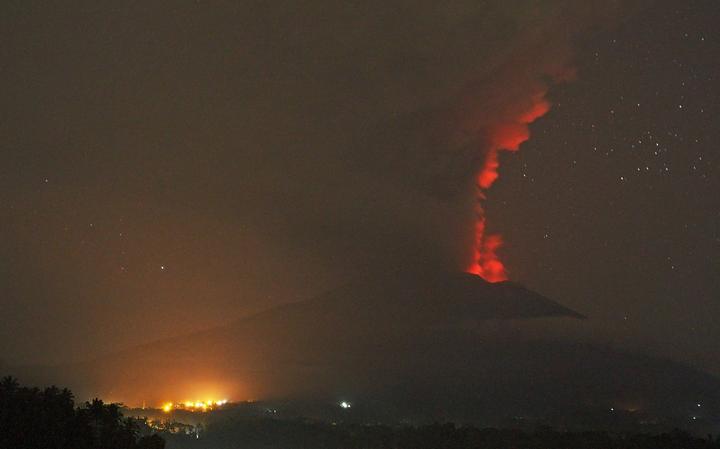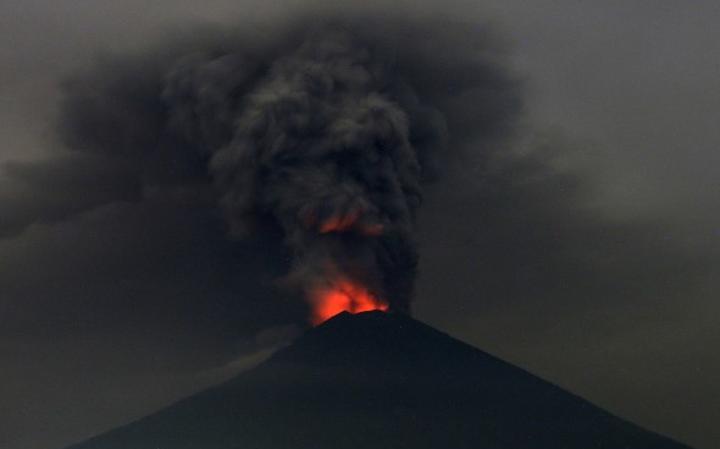Eruptions of Mount Agung

Mount Agung, a volcano on the island of Bali in Indonesia, erupted five times in late November 2017, causing thousands to evacuate, disrupting air travel and causing environmental damage. As of 27 November 2017, the alert level was at its highest and evacuation orders were in place.
Tectonic earthquakes from the volcano had been detected since early August 2017, and volcanic activity intensified for several weeks before decreasing significantly in late October. A second, more violent period of major activity began in late November. Agung has since had eruptions in January, June, July and December 2018 and January, February, March, April, May and June 2019.
Mount Agung’s 1963 eruption was among the most catastrophic volcanic events in Indonesian history. After initial explosions in the crater on 18 February of that year, lava began flowing down the mountain on 24 February, eventually travelling 7 km over the next three weeks.
On 17 March, a highly explosive eruption occurred, reaching a VEI (Volcanic Explosivity Index) of 5 and sending lethal pyroclastic flows at high speeds down the mountain’s slopes, killing at least 1,500 people.[4] Heavy rainfall mixed with ash from the eruption in the following days caused extensive lahars which killed about 200 more people. A smaller eruption occurred on 16 May, sending pyroclastic flows down the mountain once more, killing about 200 more people.[4][5] By the time the eruptions ceased in early 1964, they had claimed about 1,900 lives, marking the event as the 8th deadliest volcanic eruption of the 20th century.

Since 1963, the population of Bali has nearly doubled.[6] Mount Agung is therefore considered highly dangerous by Indonesian authorities. This concern was the primary reason behind their decision to evacuate more than 100,000 people in response to the surge in local tectonic activity in the latter half of 2017.[5]